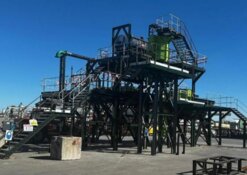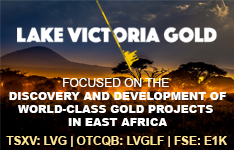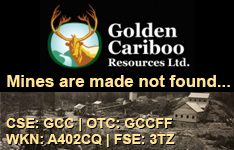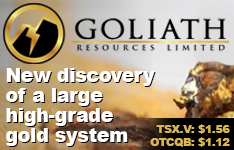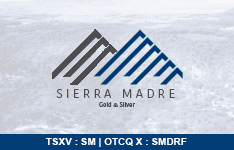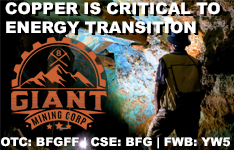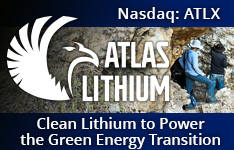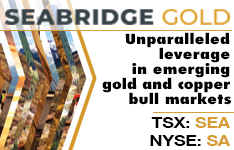Lithium prices are rebounding due to a more balanced supply-demand environment in China, many news outlets asserted early last week. However, on Friday, Chinese lithium prices fell again, curtailing the recent rally. Were those reports of rebounding lithium prices premature? Or are lithium prices actually on the path to a sustained recovery soon?
The "million-dollar question" regarding lithium has been and remains whether the expectations of rising lithium demand will translate into sustained price growth, said Cameron Perks, Benchmark's lithium product director, Stockhead's Josh Chiat reported on Nov. 20.
Now, we will examine the factors both reported to have lifted lithium prices and expected to continue supporting them, as well as the events that reversed the recent rally.
The Recent Rally
A rally in Chinese lithium prices began at the start of November 2025, during which the lithium carbonate price reached 95,200 yuan, or US$13,401, per metric ton on Nov. 17, its highest since June 2024. This was after the price had been below US$10,000 for most of this year. The jump represented a 17% monthly gain for lithium carbonate futures; the most-traded lithium carbonate contract on the Guangzhou Futures Exchange (GFEX) surged more than 10% to exceed 100,000 yuan, or US$14,000, per ton last week, according to a Nov. 19 Bloomberg News article.
"This price action reflects growing investor confidence in the battery metal's supply-demand rebalancing, particularly as manufacturing constraints begin to tighten available inventory," Discovery Alert explained on Nov. 17.
Because China accounts for an estimated 12% of the world's lithium production and 53% of refined lithium carbonate and hydroxide, Bloomberg News reported in March, the country's pricing signals and policy decisions materially influence global markets.
Activity in the Space
Recent deals done in the lithium space may mean lithium prices have seen their bottom, Red Cloud Securities Analyst Kenneth Hoffman pointed out in a November Lithium Sector Update.
For instance, earlier this month, South Korea's POSCO announced its AU$1.2 billion investment in Mineral Resources Ltd. (MIN:ASX), an Australian hard rock lithium producer, for a 30% stake.
On Nov. 20, LithiumBank announced its acquisition of a second, past-producing well to advance its nearby Boardwalk lithium brine project in west-central Alberta, Investing News Network (INN) reported the same day.
Worldwide Diversified Holdings Inc. acquired a controlling interest in American Lithium Minerals Inc. (AMLM:OTCMKTS), a U.S.-based minerals explorer, which includes indirect control over the latter's option on the Sarcobatus lithium property in Nevada, it was announced on Nov. 21.
Bullish Forecasts vs. Data
Two big players in the lithium market, not without self-interest, on Nov. 17 publicly predicted significant growth in lithium demand through the rest of 2025 and through 2026, after which the share price of each rose significantly.
During its Q3/25 earnings call, executives of Chilean lithium producer SQM (Sociedad Quimica y Minera de Chile S.A. (SQM:NYSE; SQM-B:SSX; SQM-A:SSX)), the world's third largest lithium producer according to INN in October, said that lithium demand could rise 25% this year to 1,500,000 metric tons (1.5 MMt), and grow even further next year to 1.7 MMt, reported Reuters on Nov. 19.
"We're still assessing demand growth expectations, and we remain relatively conservative," Pablo Hernandez, vice president of strategy and development for SQM's Chile lithium division, said about the outlook for 2026.
Also, SQM reported garnering the best prices for its lithium of the past two years in Q3/25, resulting in a 36% year-over-year (YOY) increase in its net income during the quarter. The company attributed the improved pricing to growth in electric vehicles and energy storage systems. SQM Chief Executive Officer (CEO) Ricardo Ramos said he expected this price trend to continue in Q4/25 but was "cautiously optimistic" given lithium's high volatility.
Similarly, Li Liangbin, chairman of Ganfeng Lithium Group Co. (GNENF:OTCMKTS), the world's second largest lithium producer according to INN, with operations in Argentina, Australia, China, Mexico and Mali, predicted a 30–40% growth in lithium demand next year, "one of the most bullish outlooks from a major industry participant," described Discovery Alert on Nov. 17. Further, if this demand level is reached, Liangbin indicated the lithium carbonate price could exceed 150,000 yuan, possibly even 200,000 yuan, or about US$28,000, per ton, more than two times current trading levels.
Fastmarkets Senior Analyst Claudia Cook wrote earlier this year that "the nascency of the lithium market means that it is prone to be led by sentiment rather than purely by supply and demand fundamentals," and a short-lived rally just this summer bore this out. Between July and Aug. 21, the lithium carbonate price surged to an 11-month high of US$12,067 per metric ton, according to Fastmarkets, on rumors that two Australian producers might decrease their output. Then the price fell to US$11,186 by the end of Q3/25, INN reported on Oct. 22. Was this short-lived November rally just a repeat of what happened three months earlier?
Stockhead's Chiat seems to think so. He wrote, "China's commodity market is one that buys heavily on rumor and [Liangbin's] claims seem to have stoked a continued rally in lithium carbonate prices," Chiat wrote.
Energy Store Systems Potential
Much of the higher global lithium demand seen this year and forecasted for 2026 is attributed to energy storage, an expanding market requiring sustained lithium consumption like electric vehicles.
"The surge in [lithium] pricing and demand, led by a dramatic overperformance in grid-scale battery energy storage systems this year, has surprised even market experts," Chiat wrote.
According to Canaccord Genuity, battery energy storage systems (BESS) comprise 23% of overall lithium demand compared to electric vehicles at 62%, reported Chiat. Canaccord's analysts recently wrote that they now forecast demand for lithium carbonate equivalent to reach 3,100,000 tons by 2035, reflecting an average increase per year of 8%.
Benchmark Chief Research Officer Adam Panayi said at Benchmark Week 2025 on Nov. 20, "There is potential in the not-so-distant future for the energy storage systems market to become the dominant market in terms of battery deployment overall."
However, even with rising lithium demand for batteries, for BESS or electric vehicles, the global battery market has a glut, noted Benchmark. According to Red Cloud's Hoffman, China's battery production hit an all-time high of 170.7 gigawatt hours (GWh) in October, a 51% YOY increase. The country's lithium-iron-phosphate production also peaked this year, at 137 GWh.
Another issue, Benchmark pointed out, is the uneven distribution of supply. China accounts for 84% of battery supply this year, though it represents 56% of demand. Battery oversupply in China's upstream led to raw material prices, including lithium, plummeting from their 2022-2023 highs. Now, lithium prices are at about US$10,000 per ton, whereas at their high, they were US$71,000 per ton.
"Essentially what we're seeing is oversupplied markets over the next several years into the early 2030s, and that's going to continue weighing on prices," said Adam Webb, Benchmark's head of battery raw materials.
Constrained Supply vs. Market Manipulation
Discovery Alert cited lithium supply constraints in China as a key contributor to the lithium price's November rally, particularly the closure of Contemporary Amperex Technology Co. Ltd.'s (CYATY:OTCMKTS) Jianxiawo lithium mine in Jiangxi province. The mine, which accounts for about 3% of global lithium production, has been closed since Aug. 11, before the recent rally, when officials ordered it shuttered due to the license having expired. It remains closed.
"Supply-side factors have emerged as the primary catalyst for China's lithium price surge, with production disruptions creating immediate market tightness that overshadows longer-term demand projections," wrote Discovery Alert.
In July, Chinese authorities had closed Zangge Mining's (000408:SHE) lithium mine in Qinghai province due to alleged noncompliance issues. The operation was allowed to restart 87 days later on Oct. 11, Benchmark reported.
Timothy Fries suggested in an Oct. 11 Investing.com article that these operational suspensions are part of China's "anti-involution" initiative aimed at reducing overcapacity in various industries, in this case, lithium. The global lithium market has faced a supply glut and plummeting prices since 2022.
"The Chinese government's intervention suggests a deliberate effort to stabilize prices through supply-side restrictions rather than allowing market forces alone to determine production levels," Fries added.
Volatility on Display
Two events happened last Friday that caused Chinese lithium prices to plunge, curtailing their November rally, Reuters reported on Nov. 21. The Guangzhou Futures Exchange (GFEX) announced it will increase transaction fees for some futures contracts of lithium carbonate beginning Nov. 24 and plans to limit the daily open position for non-futures company members, As a result, the most-active lithium carbonate contract on the GFEX closed daytime trading down 9% at 91,020 yuan, or US$12,804, per metric ton, hitting its lower limit and cancelling most of its recent gains.
"Such a move was widely seen as targeting speculative trading, analysts said, blaming some of the price correction on the decision," wrote Reuters.
The other bit of news that hit lithium prices hard on Friday was that Contemporary Amperex Technology Co. Ltd. is preparing to restart Jianxiawo early next month. Two anonymous sources told this to Bloomberg News and Reuters, but acknowledged that the battery manufacturer still needs regulatory approval to proceed, and the timing could change.
Even before these two events, some analysts expressed concern that the November lithium price rally was not sustainable, IndexBox reported on Nov. 19. Su Jinyi, analyst at Sublime China Information Co. Ltd.'s (301299:SHE) Fubao lithium battery department, said, "The short-term fundamentals still offer upward momentum, but the surge has slightly surpassed expectations."
Dennis Ip, analyst at Daiwa Capital Markets Hong Kong Ltd., said that his firm expects a near-term lithium price pullback, potentially at year-end 2025, that the market is overlooking the pace of supply growth and that it will not be easy to pass on stronger lithium prices to downstream buyers in the automotive and energy storage sectors.
When lithium prices recover, mining companies in the space stand to benefit. Here's a look at one of them:
Atlas Lithium Corp.
Atlas Lithium Corp. (ATLX:NASDAQ) aims to be the next lithium producer in Brazil, according to its November 2025 Corporate Presentation. Its lithium exploration footprint in the South American country, 557 square kilometers of mineral rights, is the largest among publicly listed companies. Atlas Lithium's focus is its 100%-owned hard rock lithium Neves Project in the state of Minas Gerais, Brazil, which it is advancing to production. Its other asset is a 28% stake in Atlas Critical Minerals Corp. (JUPGF:OTCQB).
Atlas Lithium, as of Sept. 30, 2025, had US$20.98 million (US$20.98M) in cash and cash equivalents, comprising 89% of its current assets, reported Streetwise Reports. The company continues making progress with its procurement processes for Neves, and the response from prospective contractors/bidders so far has been strong. A definitive feasibility study (DFS) of Neves done in August outlined compelling economics, a US$539M after-tax net present value, a 145% internal rate of return, and an 11-month payback period.
H.C. Wainwright & Co. Analyst Heiko Ihle, in a Nov. 17 research report, pointed out that the DFS has drawn investor interest. He highlighted that the junior miner already has a "Portaria de Lavra," a mining concession issued by Brazil's Ministry of Mines and Energy. This grants Atlas Lithium the highest level of mineral titleship in the country and allows it to start and continue mining operations.
"The combination of world-class, low-cost production and minimal upfront capital positions Atlas Lithium among the most compelling lithium projects globally," Ihle wrote. "We now anticipate near-term production . . . which may prove to be a major catalyst as well."
Ihle has a Buy rating and a price target on ATLX, implying a potential return of 146% from the price at the time of the report.
1As for ownership and share structure, management owns approximately 28% of Atlas Lithium common shares. Strategic partner Mitsui & Co. Ltd. has 7.94%. Numerous institutions hold 11.89%. Retail investors own the rest.
Atlas Lithium has 23.57 million shares outstanding. Its market cap is US$114.79M. Its 52-week range is US$3.54–8.32 per share.
| Want to be the first to know about interesting Cobalt / Lithium / Manganese investment ideas? Sign up to receive the FREE Streetwise Reports' newsletter. | Subscribe |
Important Disclosures:
- Atlas Lithium Corp. is a billboard sponsor of Streetwise Reports and pays SWR a monthly sponsorship fee between US$3,000 and US$6,000.
- As of the date of this article, officers, contractors, shareholders, and/or employees of Streetwise Reports LLC (including members of their household) own securities of Atlas Lithium Corp.
- Doresa Banning wrote this article for Streetwise Reports LLC and provides services to Streetwise Reports as an independent contractor.
- This article does not constitute investment advice and is not a solicitation for any investment. Streetwise Reports does not render general or specific investment advice and the information on Streetwise Reports should not be considered a recommendation to buy or sell any security. Each reader is encouraged to consult with his or her personal financial adviser and perform their own comprehensive investment research. By opening this page, each reader accepts and agrees to Streetwise Reports' terms of use and full legal disclaimer. Streetwise Reports does not endorse or recommend the business, products, services or securities of any company.
For additional disclosures, please click here.
1. Ownership and Share Structure Information
The information listed above was updated on the date this article was published and was compiled from information from the company and various other data providers.



